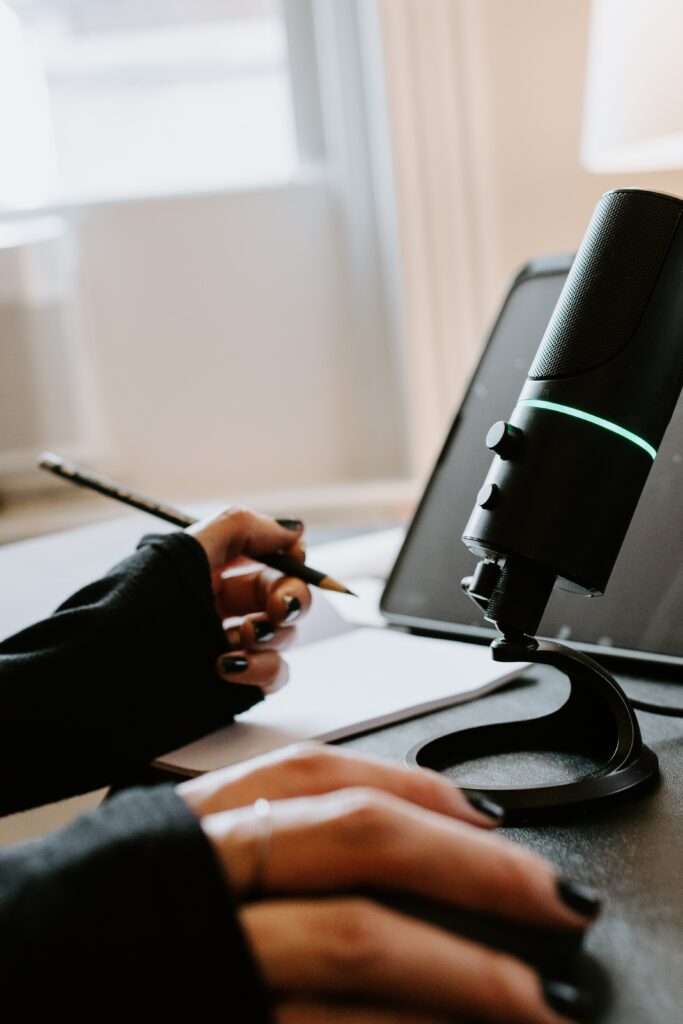How Do I Record My Gameplay?
If you’ve ever wondered how to capture and share your epic gaming moments, look no further – this article has got you covered. Learn about the various methods and tools available to record your gameplay and unleash your inner gaming superstar. Whether you’re a beginner or an experienced player, “How do I record my gameplay” may be a question that you’ve asked, and we’ll answer.
Recording your gameplay has never been easier, and you’ll soon be able to relive and showcase your gaming triumphs like a pro. So, let’s dive straight into the world of game recording and start capturing your most memorable gaming moments.
How Do I Record My Gameplay: Choose a recording software
Determine your recording needs
Before you can start recording your gameplay, it’s important to determine your specific recording needs. Consider factors such as the type of games you play, the platforms you use, and the desired output quality. Are you looking for a software that simply records your gameplay, or do you want additional features like live streaming or editing capabilities?
Research different recording software options
Once you have determined your recording needs, it’s time to research different recording software options. There are numerous software options available, both free and paid, that offer various features and capabilities. Some popular choices include OBS Studio, NVIDIA ShadowPlay, and Bandicam. Take the time to read about the features and user reviews of each software to find the one that best fits your requirements.
Consider system requirements
Before finalizing your choice of recording software, it’s crucial to consider the system requirements. Each software has its own specific requirements, such as minimum processor speed, RAM, and graphics card specifications. Make sure your computer meets these requirements to ensure smooth and uninterrupted recordings.
Read reviews and user experiences
To get a better understanding of how well a particular recording software performs, take the time to read reviews and user experiences. Platforms like Reddit, gaming forums, and YouTube channels dedicated to gaming often have valuable insights from users who have tested different software. Pay attention to feedback regarding stability, ease of use, and the quality of recorded footage.
Consider cost and budget
While there are free recording software options available, some advanced features may require a paid version. Consider your budget when choosing a recording software and determine if the additional features offered by paid software are worth the investment. Keep in mind that some free versions may have limitations such as watermarks on recordings or limited recording time.
How Do I Record My Gameplay: Check hardware requirements
Ensure your computer meets the minimum requirements
Once you have chosen a recording software, it’s important to ensure that your computer meets the minimum hardware requirements. These requirements can usually be found on the software’s official website. Pay attention to details such as processor speed, RAM, and graphics card specifications, as these can greatly affect the performance of the recording software.
Check for required hardware such as capture cards or additional equipment
Depending on your specific recording needs, you may require additional hardware such as capture cards or specialized equipment. Capture cards are often necessary when recording console gameplay, as they allow you to connect your console to your computer for capturing. Make sure to check if your chosen recording software requires any additional hardware and plan accordingly.

Setting up the recording software
Download and install the chosen recording software
After confirming that your computer meets the hardware requirements, download the chosen recording software from the official website. Follow the installation instructions provided by the software to ensure a successful installation.
Configure the settings according to your preferences
Once the software is installed, take some time to configure the settings according to your preferences. This includes options such as output folder location, default recording format, and hotkey controls. Familiarize yourself with the software’s settings menu and make adjustments to suit your needs.
Define the quality settings for your recordings
To ensure high-quality recordings, define the quality settings within the recording software. This includes parameters such as resolution, frame rate, and bitrate. Higher settings will result in better-quality footage but may also require more computer resources. Experiment with different settings to find the right balance between quality and performance.
Customize audio source and settings
Audio is an important aspect of gameplay recording. Make sure to customize the audio source and settings within the recording software. Choose the audio sources you wish to record, such as the game sound, your microphone, or both. Adjust the audio levels and balance to ensure clear and enjoyable audio in your recordings.
Adjust recording hotkeys for easy control
Recording hotkeys are essential for easily controlling the recording software while gaming. Locate the hotkey settings within the software and assign keys for starting, pausing, and stopping the recording process. This will allow you to focus on your gameplay while effortlessly managing the recording software.
How Do I Record My Gameplay: Choose the game to record
Select the game you want to record
With your recording software setup, it’s time to select the game you want to record. Choose a game that you enjoy playing or one that you believe will create engaging content for your audience. Consider the genre, popularity, and how well it will showcase your skills and personality.
Check for compatibility with the recording software
Not all games are compatible with all recording software. Before proceeding, ensure that the game you have selected is compatible with the recording software you are using. Check the software’s website or user manual for a list of compatible games. This step is crucial to avoid any technical issues during recording.
Ensure the game is running smoothly without lag or other issues
Before starting the actual recording process, make sure the game is running smoothly without any lag or other technical issues. Adjust the game settings or graphics options if needed to improve performance. Smooth gameplay ensures a better recording experience and higher quality footage.

Setup screen recording
Choose between fullscreen or specific window capture
Screen recording can be done in fullscreen mode, capturing the entire desktop screen, or you can choose to record a specific window. Depending on your preference or the content you want to capture, select the appropriate capture mode within your recording software.
Position and resize the recording area
If you opt for a specific window capture, position and resize the recording area to focus on the game window. This will eliminate any unnecessary elements on your screen, providing a cleaner and more professional recording. Make sure the recording area is large enough to capture all important gameplay elements.
Set up the frame rate and resolution
Frame rate and resolution are crucial settings for your screen recordings. Higher frame rates result in smoother motion, while higher resolutions provide more detail. Find a balance between these settings based on the capabilities of your computer and your desired output quality. Consider the platform on which you will be sharing the recordings to ensure compatibility.
How Do I Record My Gameplay: Audio configuration
Select the audio sources to record (game sound, microphone, etc.)
Audio configuration is an important step in recording gameplay. Choose the audio sources you want to record, such as the game sound, background music, or your microphone. Ensure that all necessary audio sources are selected within the recording software.
Adjust audio levels and balance
To achieve a balanced audio experience, adjust the audio levels within the recording software. Make sure that the game sound, microphone, and any other audio sources are properly balanced to avoid one overpowering the other. This will ensure a pleasant listening experience for your audience.
Consider enabling or disabling voice chat recording
If you plan to include voice chat in your recordings, consider enabling or disabling voice chat recording within the software. Depending on your preferences and the nature of your content, you may want to include or exclude voice chat from your recordings for privacy reasons or to maintain a cleaner audio track.

How Do I Record My Gameplay: Hotkey controls
Assign hotkeys for starting, pausing, and stopping the recording
Hotkey controls are essential for easily managing your recording sessions. Assign hotkeys within the software to start, pause, and stop the recording process. This allows you to control the recording without interrupting your gameplay.
Set hotkeys for capturing screenshots or clipping videos
In addition to basic recording controls, you may want to set hotkeys for capturing screenshots or clipping videos during gameplay. This allows you to capture important moments or highlights without the need for extensive editing later on. Customize these hotkeys within the recording software to your preference.
Configure other necessary hotkeys for ease of use
Depending on your specific requirements, consider configuring other hotkeys within the recording software for ease of use. This may include hotkeys for adjusting audio levels, switching between recording modes, or accessing additional features offered by the software. Customizing hotkeys according to your needs will enhance your recording experience.
How Do I Record My Gameplay: Test and preview settings
Run a test recording to ensure everything works smoothly
Before starting your actual gameplay recording, it’s a good idea to run a test recording. This allows you to ensure that all settings are properly configured and that the recording software is functioning as expected. Pay attention to the audio quality, video resolution, and overall performance of the test recording.
Preview the recorded footage to check for any issues or adjustments needed
After completing the test recording, take the time to preview the recorded footage. This will give you an idea of how your gameplay recordings will look and sound. Check for any issues such as audio glitches, video stuttering, or incorrect aspect ratios. Make adjustments to the settings if necessary to achieve the desired result.

Start recording
Launch the game
With all the necessary settings and preparations in place, it’s time to launch the game you have chosen to record. Double-check that the game is running smoothly without any technical issues.
Start the recording software
Open the recording software and ensure that it is ready to start capturing your gameplay. In some cases, you may need to activate the recording software manually, while others may start recording automatically when the game is launched. Check the documentation for your chosen software to confirm the process.
Begin recording using the designated hotkey
Using the hotkey you assigned earlier, start the recording process. This will begin capturing your gameplay footage along with any selected audio sources. Make sure to confirm that the recording has started by checking the software’s interface or any visual indicators.
Edit and export recordings
Trim and cut unnecessary parts of the recorded gameplay
After completing your gameplay recording, it’s time to edit the footage. Use video editing software to trim and cut out any unnecessary parts of the recorded gameplay. This includes moments with no action, loading screens, or any other sections that may lower the overall quality of the recording.
Add overlays, text, or special effects if desired
To enhance the visual appeal of your gameplay recordings, consider adding overlays, text, or special effects during the editing process. This can include elements such as your logo, channel name, or any additional information you want to provide to your audience. Be creative and experiment with different effects to make your recordings stand out.
Adjust audio levels and remove background noise
During the editing stage, pay attention to the audio quality of your recordings. Adjust audio levels if needed to ensure a balanced sound mix. Additionally, remove any background noise or unwanted audio artifacts to improve the overall listening experience.
Export the final recording to a suitable format
Once all edits and adjustments are complete, export the final recording to a suitable format. Consider the platform on which you will be sharing your gameplay recordings and export in a format that is compatible. Common formats include MP4, AVI, or MOV. Keep in mind that some platforms or video editing software may have specific format requirements, so ensure compatibility before exporting.
By following these steps, you can confidently record your gameplay and share your gaming experiences with others. Remember to have fun and experiment with different settings and techniques to find the recording setup that works best for you. Happy gaming and recording!




